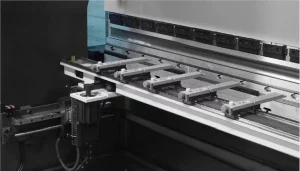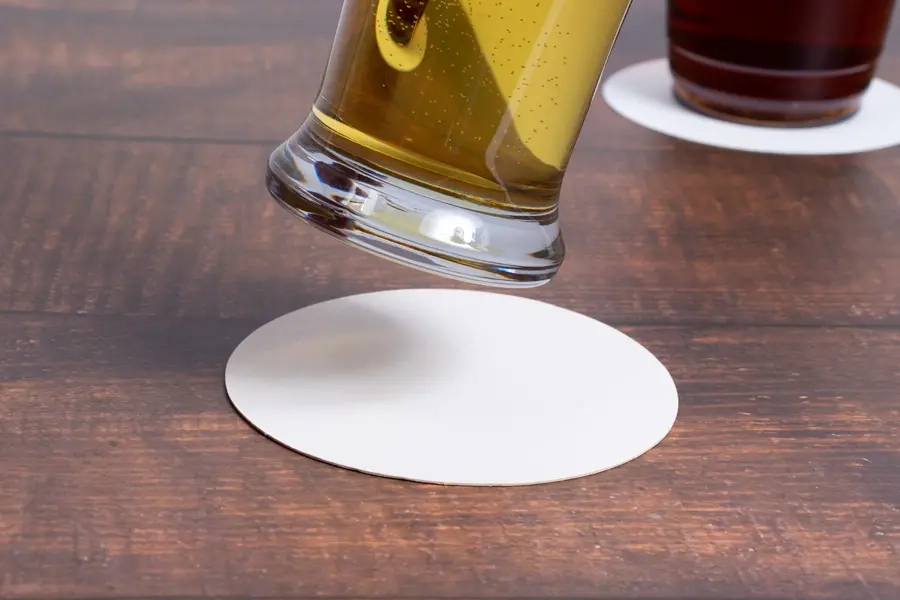The fusion of durable industrial bending systems with modern machinery showcases the advancement of technology in industrial sectors. These systems, famed for their durability and precision, have transformed manufacturing, enhancing efficiency and accuracy. Global industries adapt to the evolving landscape by seamlessly integrating durable bending systems, a pivotal element for operational excellence. Exploring the synergy between technological progress and the use of sturdy bending systems reveals their profound impact on contemporary industrial practices.
Key Takeaways
- Regular maintenance schedules are crucial for ensuring durability in industrial bending systems
- Technological evolution, such as AI algorithms and material science innovations, is driving the precision and durability of bending systems
- Investing in durable machinery leads to cost savings, higher profitability, and enhanced workplace safety
- Efficient integration of bending systems through advanced automation and real-time monitoring optimizes operational processes and enhances productivity
Challenges in Industrial Bending Systems
Navigating the intricate demands of precision and durability poses a formidable challenge in the realm of Industrial Bending Systems. Achieving the required level of accuracy while ensuring the longevity of the machinery is a delicate balance that manufacturers strive to maintain. One of the primary challenges faced in Industrial Bending Systems is the need to bend various materials, ranging from metals to plastics, with consistent precision. This necessitates the integration of advanced technologies that can handle the diverse properties of these materials while maintaining the structural integrity of the final product.
Moreover, durability is paramount in industrial settings where continuous operation is essential. Components within bending systems are subjected to significant stress and wear, demanding robust construction and high-quality materials to withstand these conditions. Ensuring the longevity of Industrial Bending Systems involves meticulous design considerations, regular maintenance schedules, and the utilization of cutting-edge materials that can endure the rigors of industrial applications. By addressing these challenges head-on, manufacturers can enhance the reliability and efficiency of their bending systems, meeting the evolving needs of modern machinery.
Evolution of Bending Technology
The progression of bending technology in industrial applications has been marked by a continuous adaptation to the challenges posed by the intricate demands of precision and durability within Industrial Bending Systems.
- Integration of AI Algorithms: Advancements in artificial intelligence have enabled the development of bending systems that can analyze and adjust parameters in real-time, enhancing precision and efficiency.
- Material Science Innovations: The evolution of bending technology has been closely linked to advancements in materials science, leading to the creation of machinery capable of bending a wider range of materials while maintaining durability.
- Industry 4.0 Connectivity****: Modern bending systems are increasingly equipped with IoT capabilities, allowing for remote monitoring, predictive maintenance, and seamless integration into the larger framework of Industry 4.0.
These three key areas highlight the transformative journey of bending technology, showcasing how innovation has driven the industry towards more precise, durable, and interconnected bending systems.
Importance of Durability in Machinery
With machinery serving as the backbone of industrial operations, durability stands as a paramount factor in ensuring seamless functionality and longevity. The importance of durability in machinery cannot be overstated. In the industrial sector, where heavy-duty equipment is constantly in use, having durable machinery is crucial to maintaining production efficiency and reducing downtime. Durability ensures that machines can withstand the rigors of daily operations, including high temperatures, heavy loads, and continuous use without succumbing to wear and tear.
Investing in durable machinery not only enhances operational efficiency but also contributes to cost savings in the long run. When machinery is built to last, companies can avoid frequent repairs, replacements, and maintenance costs, ultimately leading to higher profitability. Additionally, durable machinery increases workplace safety by reducing the risk of sudden malfunctions or breakdowns that could jeopardize the well-being of employees.
Integrating Bending Systems Efficiently
Having established the critical role of durability in machinery, a seamless integration of bending systems efficiently enhances operational performance and precision in modern industrial settings.
- Advanced Automation: Implementing automated bending systems can significantly increase efficiency by reducing manual labor, minimizing errors, and speeding up production processes.
- Real-time Monitoring: Utilizing sensors and data analytics allows for continuous monitoring of bending operations, enabling real-time adjustments to ensure accuracy and consistency.
- Integration with CAD/CAM Software: Connecting bending systems with Computer-Aided Design/Computer-Aided Manufacturing software streamlines the production workflow, facilitating precise design translation into bending instructions for improved productivity.
Efficient integration of bending systems not only optimizes operational processes but also paves the way for enhanced productivity and cost-effectiveness in industrial environments. By embracing innovative technologies and seamless integration methods, modern machinery can achieve higher levels of performance and precision, meeting the evolving demands of the industrial sector.
Enhancing Industrial Processes With Bending Systems
Enhancing industrial processes through the strategic implementation of bending systems revolutionizes operational efficiency and precision in modern manufacturing environments. By integrating durable industrial bending systems into production lines, manufacturers can streamline their workflows, reduce material waste, and enhance the overall quality of their products. These bending systems offer advanced capabilities such as computer-controlled precision, multi-axis bending, and automated adjustments, allowing for a high degree of accuracy and repeatability in bending operations.
The use of bending systems not only increases the speed of production but also ensures consistency in the final output, leading to improved product quality and customer satisfaction. Additionally, the integration of bending systems enables manufacturers to handle a wide range of materials, from traditional metals to modern composites, expanding the possibilities for product design and innovation.

Future Trends in Industrial Bending Systems
Anticipating the advancements in industrial bending systems is crucial for staying at the forefront of modern manufacturing innovation.
- Advanced Automation: Integration of AI and machine learning algorithms will enhance precision and speed in bending processes.
- Material Flexibility: Future systems will be designed to bend a wider range of materials, including advanced composites and alloys.
- Enhanced Sustainability: The next generation of bending systems will prioritize energy efficiency and waste reduction, aligning with eco-friendly manufacturing practices.
Embracing these future trends in industrial bending systems will not only streamline production processes but also offer manufacturers a competitive edge in the rapidly evolving industrial landscape. As technology continues to advance, staying informed about these trends and adapting to incorporate them into manufacturing practices will be essential for companies looking to thrive in the modern machinery sector.
Frequently Asked Questions
What Are the Common Materials That Can Be Bent Using Industrial Bending Systems?
Common materials that can be bent using industrial bending systems include steel, aluminum, copper, and stainless steel. These systems are versatile and can handle various thicknesses and shapes of materials, making them essential in manufacturing processes.
How Do Environmental Factors Affect the Durability of Industrial Bending Systems?
Environmental factors impact the durability of industrial bending systems significantly. Variables like humidity, temperature fluctuations, and exposure to corrosive substances can degrade system components. Regular maintenance, protective coatings, and controlled operational environments can mitigate these effects, ensuring prolonged system lifespan.
Are There Any Safety Measures That Need to Be Taken When Operating Industrial Bending Systems?
Safety measures are paramount when operating industrial bending systems. Ensure proper training for operators, use protective gear, follow equipment guidelines, conduct regular maintenance checks, and implement emergency protocols. Prioritize safety to prevent accidents and ensure a secure work environment.
Can Industrial Bending Systems Be Customized to Meet Specific Bending Requirements?
Industrial bending systems can be customized to meet specific bending requirements through advanced software integration, tooling modifications, and precision calibration. Tailoring these systems ensures optimal performance and efficiency in bending operations, enhancing productivity and quality.
How Do Advancements in Technology Impact the Design and Functionality of Modern Industrial Bending Systems?
Advancements in technology revolutionize modern industrial bending systems by enhancing precision, speed, and automation. Integrated sensors, AI algorithms, and IoT connectivity optimize design and functionality, leading to increased efficiency and accuracy in bending operations for diverse manufacturing needs.
Conclusion
In conclusion, the integration of durable industrial bending systems into modern machinery represents a significant advancement in industrial processes. By addressing challenges, evolving bending technology, prioritizing durability, and efficiently integrating these systems, manufacturers can optimize their operations and enhance efficiency. As we look towards the future, the continued innovation and adoption of bending systems will play a crucial role in shaping the landscape of modern manufacturing practices.
You May Also Like:



